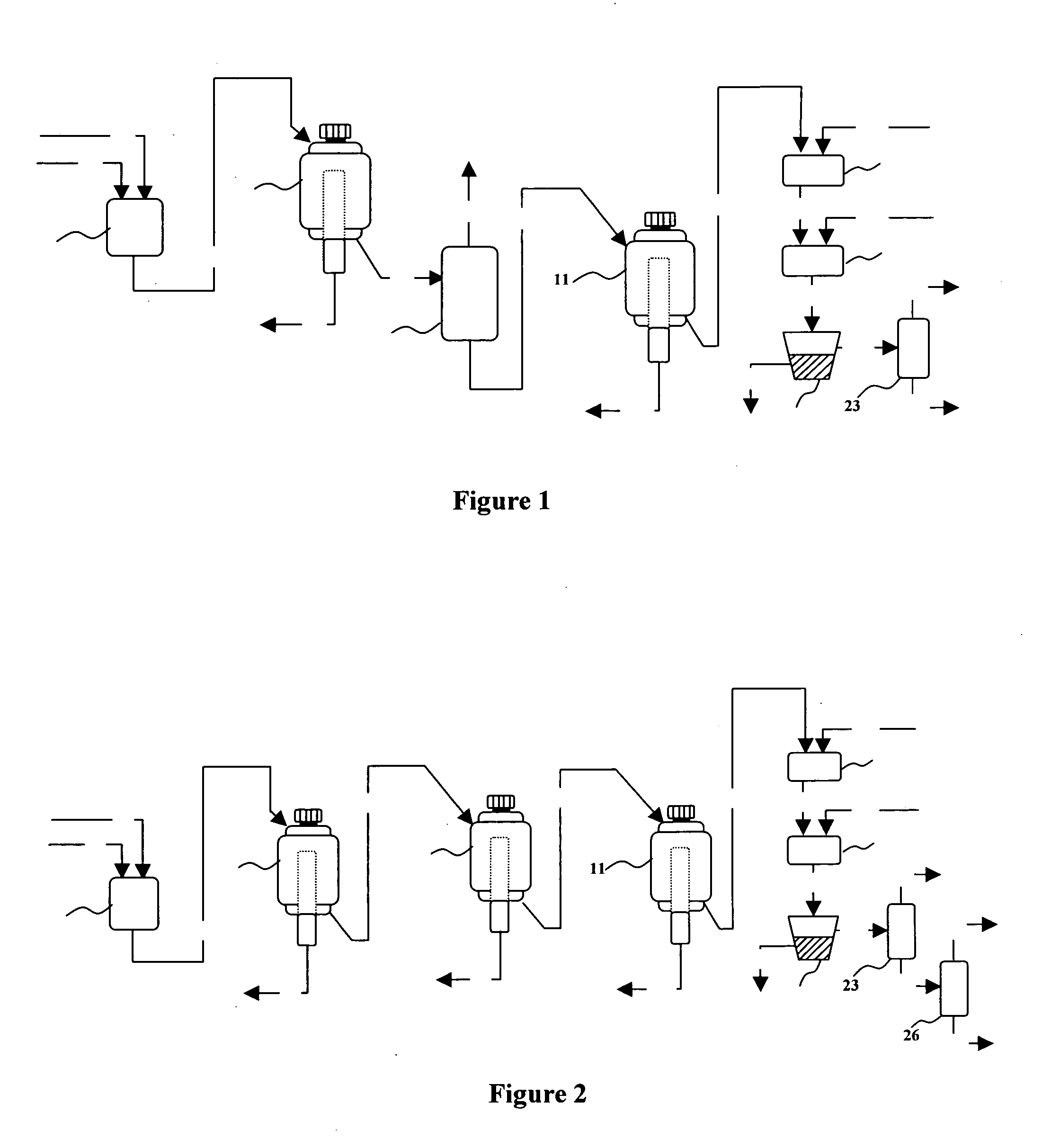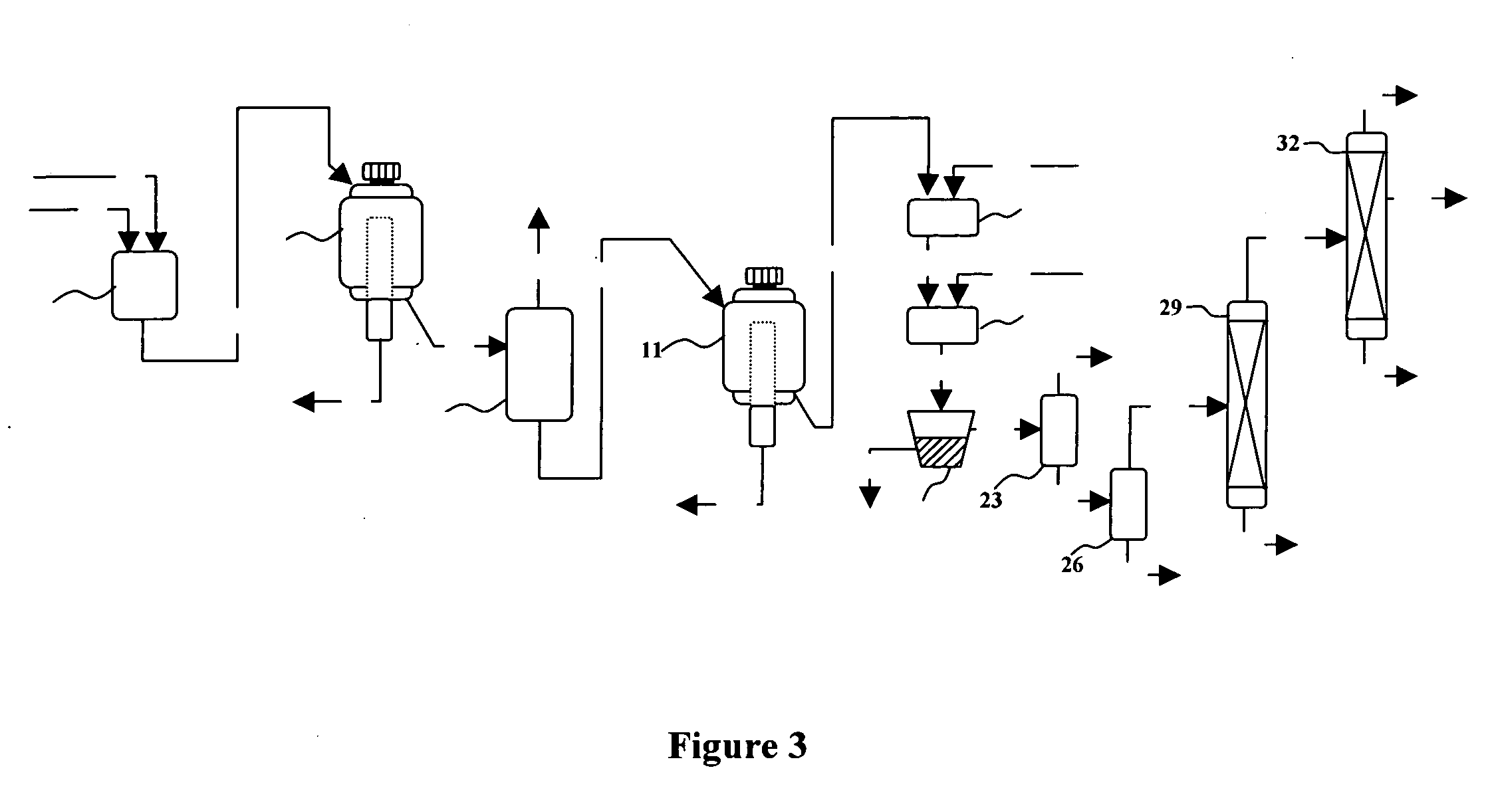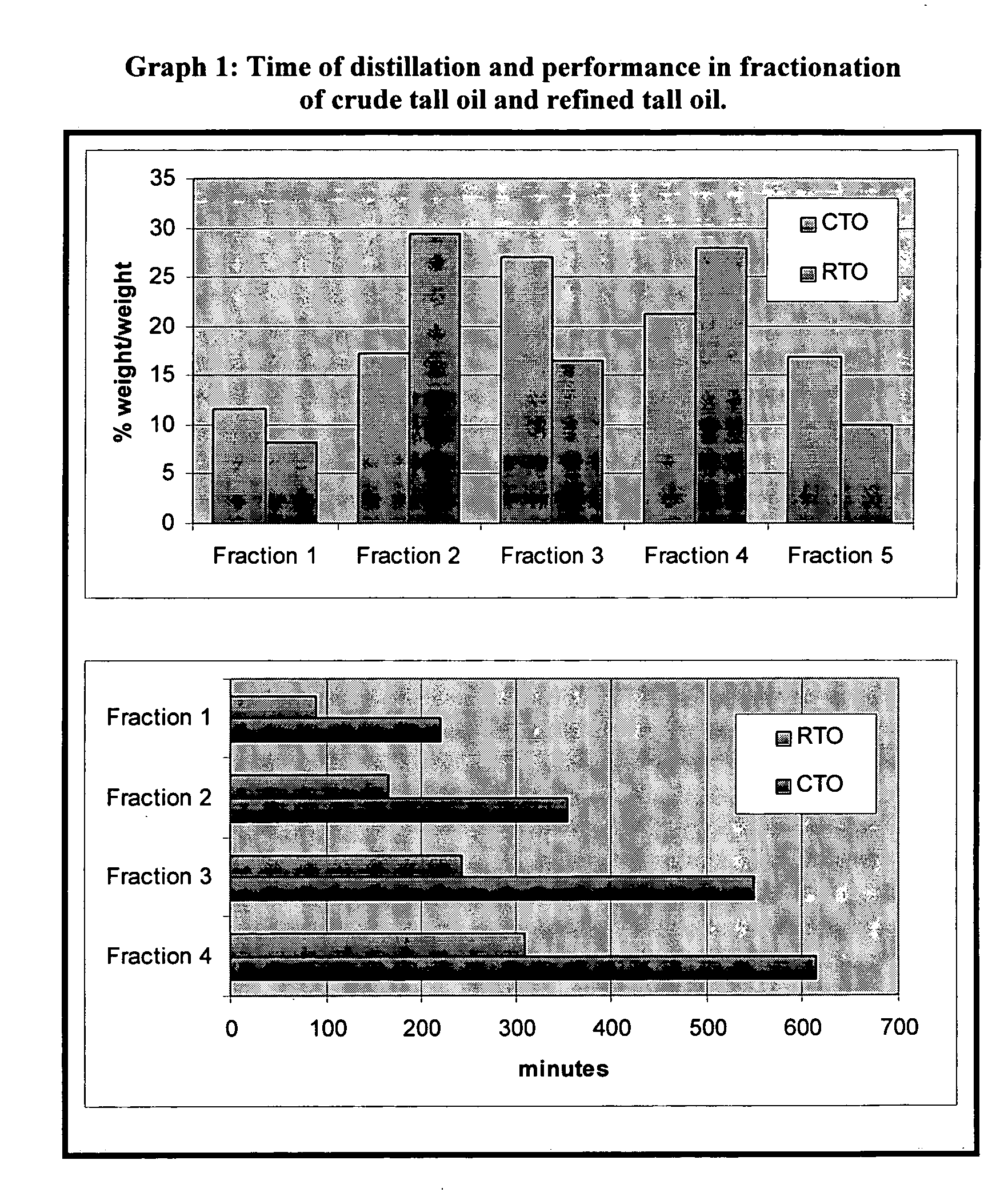Process of refinement of crude tall oil using short path distillation
a technology of crude tall oil and distillation process, which is applied in the recovery of fatty oils/acids from waste, natural resin process, fatty oil/acid recovery from waste, etc., can solve the problems of lignin dissolution, few direct applications of crude tall oil, and disrupt the cellular structure, so as to reduce the thermal degradation of saponified tall oil and efficiently diffuse water
- Summary
- Abstract
- Description
- Claims
- Application Information
AI Technical Summary
Benefits of technology
Problems solved by technology
Method used
Image
Examples
example 1
[0041] 550 g of crude tall oil with an acid number of 146, an saponification index of 157 and an unsaponifiable matter content of 17.6% are saponified in a 2000-ml reactor, connected to a reflux condenser and with mechanical agitation, with 125 g of sodium hydroxide at 50% under reflux for two hours to generate saponified tall oil with a water content of 13.1%.
[0042] 200 g of saponified tall oil are fed to the feeding funnel of a short path evaporator model UIC KDL-5. The temperature of the jacket of the feeding funnel is set at 110° C. under agitation and inert atmosphere. The temperature of the evaporator jacket is set at 210° C.; temperature of the condenser, 70° C.; evaporator residue jacket, 240° C. and operation pressure, 700 mm Hg.
[0043] Saponified tall oil is fed to the evaporator at 0.8 kg / h, and 172 g of first residue with a water content of 0.41% is recovered. A mixture of water and unsaponifiable matter with a non-volatile content of 9.1% is recovered in the distillate...
example 2
[0047] 160 g of crude tall oil are processed according the example 1 and 98 g of refined tall oil are produced.
[0048] 90 g of refined tall oil are fed to the feeding funnel of a short path evaporator model UIC KDL-5. The temperature of the jacket of the feeding funnel is set at 120° C. under agitation and inert atmosphere. The temperature of the evaporator jacket is set at 200° C.; temperature of the condenser, 90° C.; jacket of the residue evaporator, 150° C.; and operation pressure, 1 mmHg.
[0049] The evaporator is fed at 0.6 kg / h, and 79 g of distillate comprising extracted tall oil or ETO is recovered. Table 3 shows the characteristics of the ETO obtained and the original CTO.
TABLE 3Characteristics of ETO and CTOCharacteristicsCrude tall oilExtracted tall oilAcid number146190Saponification index157190Unsaponifiable matter percent17.60.3Fatty acid percent34.147.7Rosin acid percent48.351.7Gardner color131
example 3
[0050] 2000 g of crude tall oil are processed according Example 1. 1236 g of refined tall oil are recovered.
[0051] 900 g of refined tall oil are fed to a 2000-ml round flask connected to a 66-cm packed fractionation column with 3-mm aleatory Poropack packing and a distillation condenser head with reflux control.
[0052] Distillation is performed at a reduced pressure of 3 mmHg and at a temperature of the reboiler between 200 and 370° C. Distillate is separated into five fractions analyzed through gas chromatography. The distillation objective is to generate a fraction 1 comprising fatty acids with less than 18 carbon atoms, a fraction 2 with fatty acids with 18 carbon atoms free of rosin acids, a fraction 3 comprising a mixture of fatty and rosin acids, a fraction 4 comprising rosin acids free of fatty acids and a fraction 5 or distillation residue.
[0053] Similarly, 900 g of crude tall oil are distilled under the same equipment configuration, operation and control conditions used i...
PUM
| Property | Measurement | Unit |
|---|---|---|
| pressure | aaaaa | aaaaa |
| pressure | aaaaa | aaaaa |
| melting point | aaaaa | aaaaa |
Abstract
Description
Claims
Application Information
 Login to View More
Login to View More - R&D
- Intellectual Property
- Life Sciences
- Materials
- Tech Scout
- Unparalleled Data Quality
- Higher Quality Content
- 60% Fewer Hallucinations
Browse by: Latest US Patents, China's latest patents, Technical Efficacy Thesaurus, Application Domain, Technology Topic, Popular Technical Reports.
© 2025 PatSnap. All rights reserved.Legal|Privacy policy|Modern Slavery Act Transparency Statement|Sitemap|About US| Contact US: help@patsnap.com



